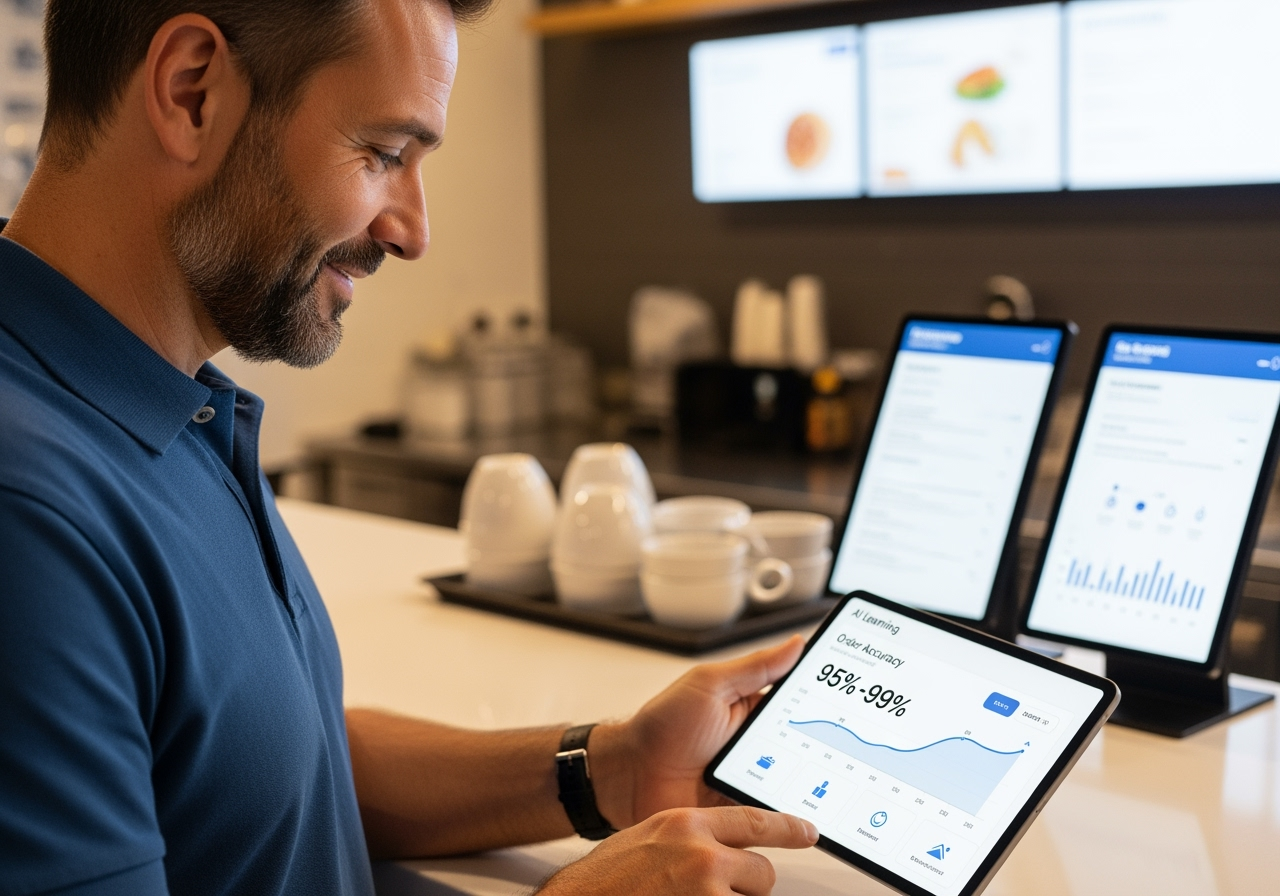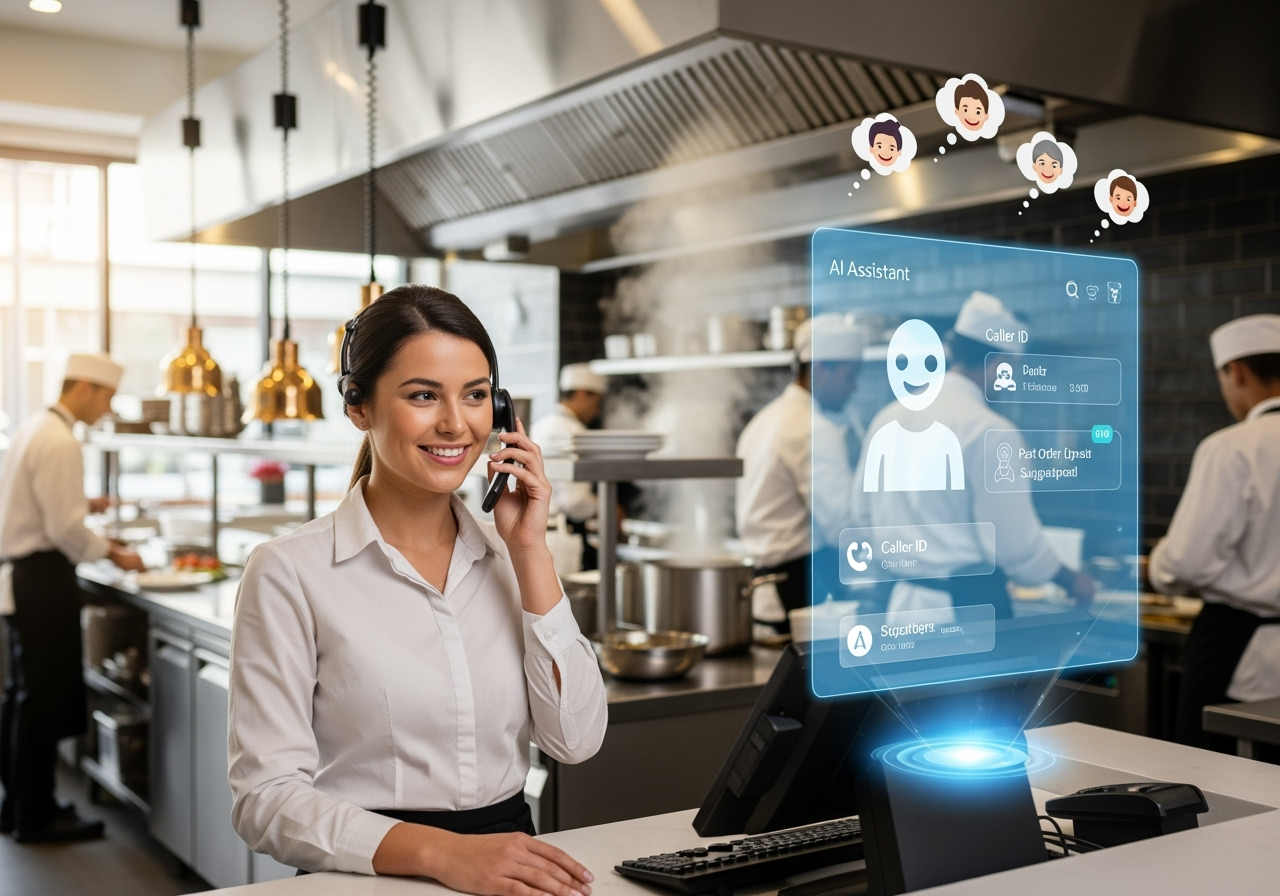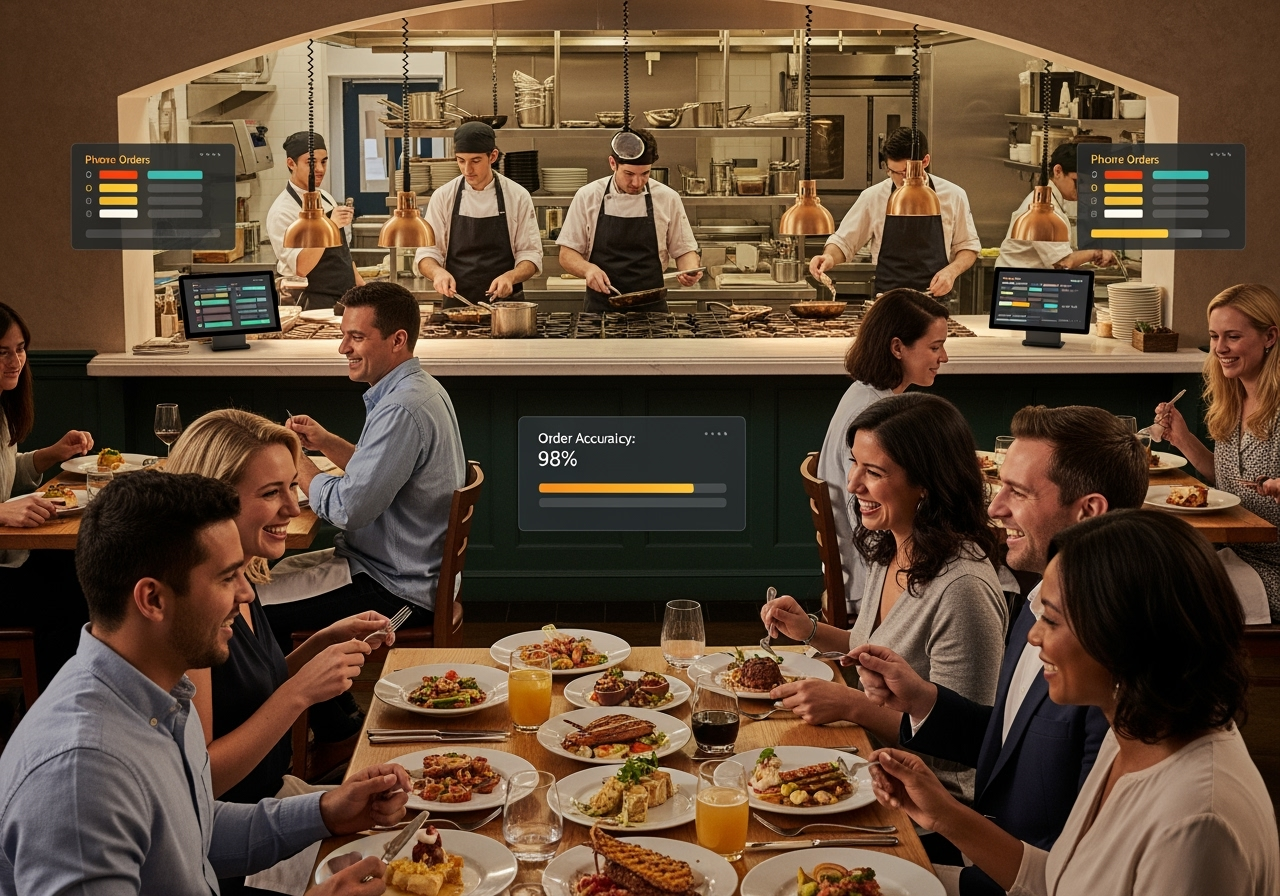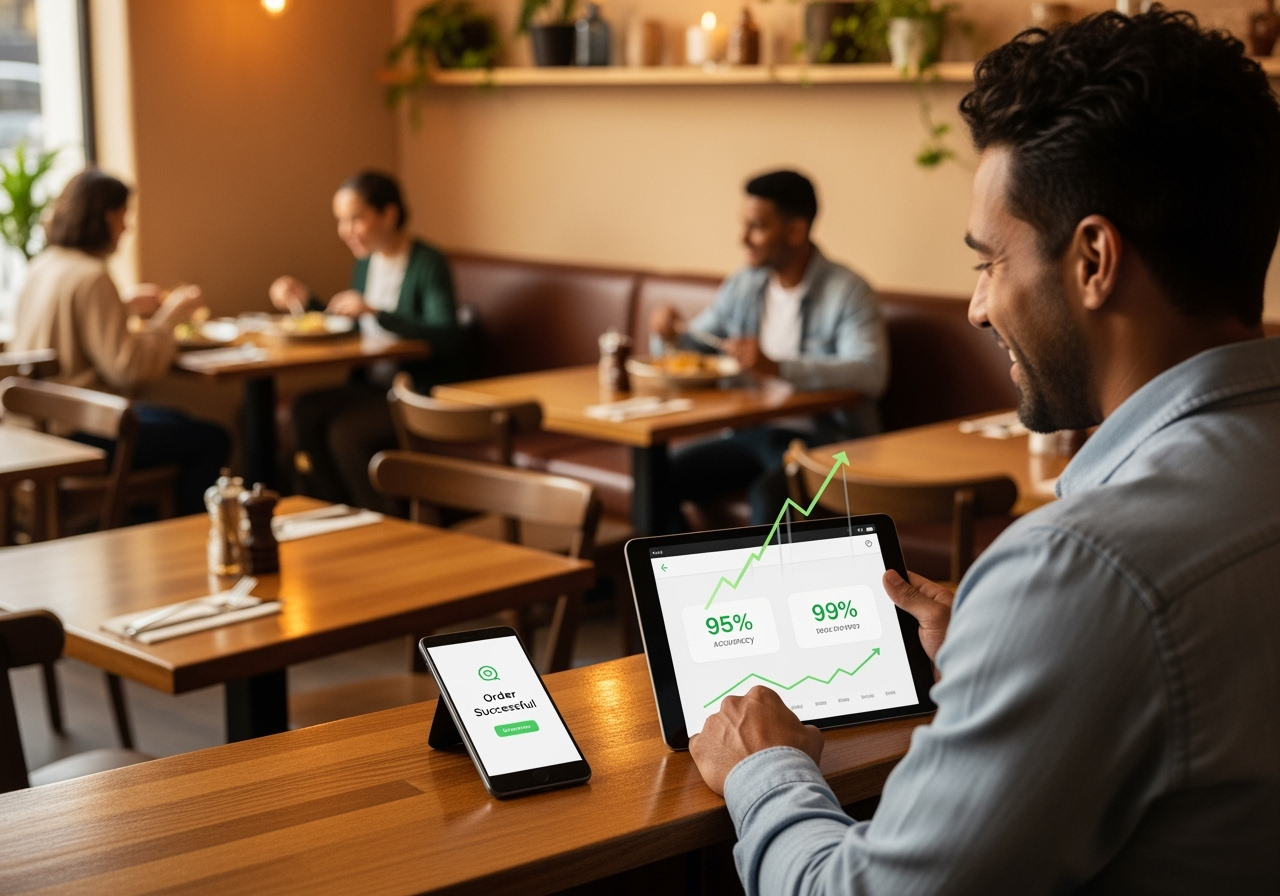
Introduction
Every missed call teaches traditional restaurants a painful lesson about lost revenue, but Takeorder AI learns from every successful interaction to become more intelligent, accurate, and profitable for your business.
While your competitors struggle with busy signals and overwhelmed staff, voice AI technology is quietly revolutionizing how restaurants handle customer interactions through continuous machine learning. The restaurant industry loses billions annually to missed calls and poor phone service, but the solution isn't just answering more calls; it's about getting smarter with every conversation. Here's how Takeorder AI's learning curve transforms your restaurant's phone operations from a daily headache into a competitive advantage.
Machine learning in voice AI isn't just a buzzword; it's the foundation that makes Takeorder AI increasingly valuable over time. Unlike static phone systems that never improve, our conversational AI analyzes patterns, adapts to customer preferences, and refines responses based on real interactions.
The learning process begins immediately. When a customer calls to order "the usual pepperoni with extra cheese," the AI doesn't just process the order; it learns that this customer prefers specific modifications, remembers their delivery address, and notes their preferred ordering time. This restaurant's AI machine learning creates a personalized experience that builds customer loyalty while reducing order errors.
Natural language processing improvements happen continuously. The AI learns regional dialects, understands local slang for menu items, and adapts to your restaurant's unique terminology. A "large pie" in New York becomes "extra-large pizza" in Chicago, and the AI seamlessly handles both without missing a beat.

Every successful order teaches the AI more about your menu complexity. Initially, the system might need clarification when customers request "the spicy chicken thing," but after processing similar requests, it learns to suggest your Nashville Hot Chicken Sandwich. This AI phone ordering improvement reduces confusion and speeds up order processing.
The AI also learns seasonal patterns. During football season, wings orders spike on Sundays. Before holidays, family meal combos increase. This predictive learning helps restaurants prepare inventory and staff accordingly.
Conversational AI adaptation extends beyond individual orders to understanding customer behavior patterns. The system learns that families typically order between 5-7 PM, business customers prefer quick lunch options around noon, and late-night orders often include desserts.
This intelligence enables proactive suggestions. When a regular customer calls during their usual ordering window, the AI can suggest their preferred items, reducing call time and improving customer satisfaction.
The learning curve shows measurable improvements in key metrics:
When you add new items or modify prices, Takeorder AI's dashboard allows instant updates that the AI immediately incorporates into conversations. No retraining period, no service interruption, just seamless adaptation to your changing menu.
The AI continuously optimizes conversation flows based on successful interactions. If customers respond better to "Would you like to add our popular garlic bread?" versus "Any sides today?", the system learns and adapts its approach.
Learning extends to your POS system integration. The AI learns your kitchen's capacity, understands prep times for different items, and can suggest realistic delivery times based on current order volume and historical data.

A local pizzeria implemented Takeorder AI during their peak season. Initially, the AI handled basic orders well but struggled with complex custom pizzas. Within two weeks, the system learned to:
Result: Order accuracy improved from 92% to 99%, and average order value increased by $3.50 due to intelligent upselling.
A fast-casual chain's drive-thru AI learned to optimize for speed without sacrificing accuracy. The system discovered that customers appreciated quick confirmation of their order total and estimated wait time. It also learned to identify repeat customers by voice patterns and proactively suggest their usual orders.
Result: Average drive-thru time decreased from 4.2 minutes to 2.8 minutes while customer satisfaction scores increased by 18%.
The most powerful aspect of voice AI learning is its compound nature. Each successful interaction doesn't just improve that single conversation; it enhances the entire system's performance. When the AI learns a new customer preference pattern at one location, that intelligence can benefit similar restaurants across the network.
This creates a snowball effect where your restaurant benefits not only from its customer interactions but from the collective learning of the entire Takeorder AI ecosystem. Your pizza shop learns from successful interactions at other pizzerias, while maintaining the unique characteristics that make your business special.
The AI learns to detect customer emotions and adjust its approach accordingly. A frustrated customer gets transferred to a human operator faster, while a happy regular customer might receive a special offer or loyalty program invitation.
As the learning curve progresses, the AI begins predicting customer needs. It might suggest adding a popular appetizer to an order, recommending a dessert based on the customer's previous purchases, or offering delivery time alternatives during busy periods.
The beauty of AI learning lies in measurable improvements:
These improvements translate directly to your bottom line. A restaurant processing 100 calls daily can see an additional $500-1000 in weekly revenue just from improved order accuracy and intelligent upselling.

The learning curve never stops. Future developments include:
Ready to put your restaurant on the learning curve? Takeorder AI offers a free 7-day trial with no credit card required. You'll see immediate improvements in call handling, with continuous learning benefits building over time.
The question isn't whether voice AI will transform restaurant operations; it's whether you'll be ahead of the curve or playing catch-up. Every day you wait is another day of missed learning opportunities and lost revenue.
Book a demo today and discover how the voice AI learning curve can transform your restaurant's phone operations from a daily challenge into a competitive advantage. Your future self and your customers will thank you.
Ready to get smarter with every call? Start your free trial and join the restaurants already benefiting from AI that never stops learning and improving.
Stay updated on our news and events! Sign up to receive our newsletter.
Thank you for signing up!
Something went wrong. Please try again later.